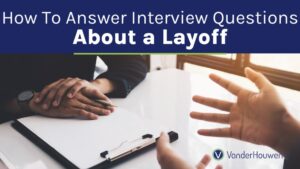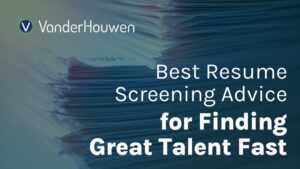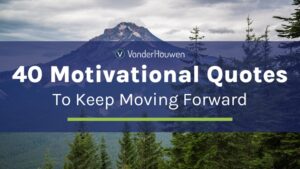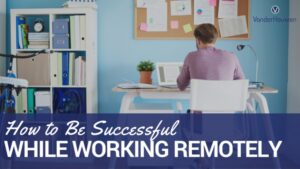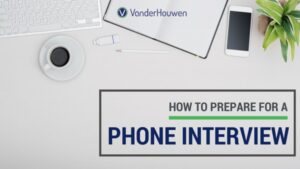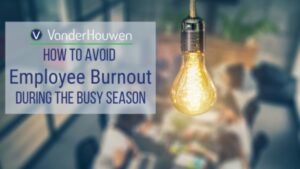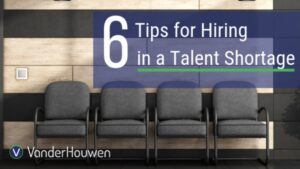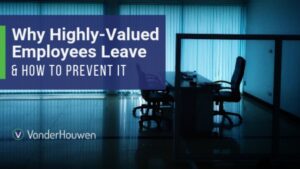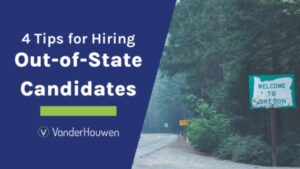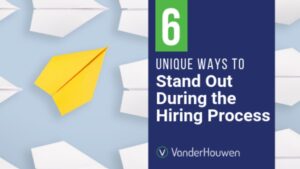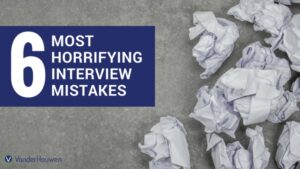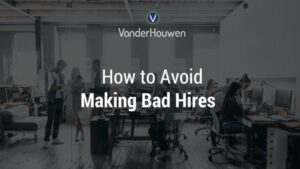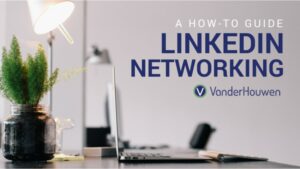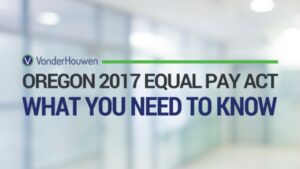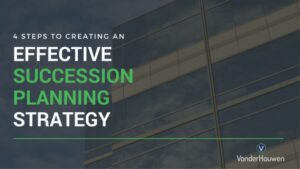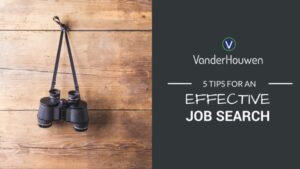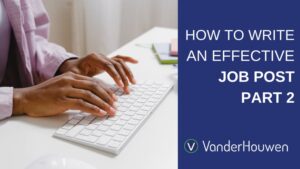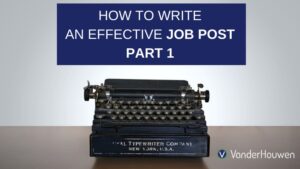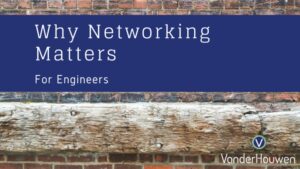How to Craft the Perfect Follow Up Email
When it comes to your job search, it’s important to take advantage of every opportunity. Each touch point with a hiring manager or recruiter is an additional way to sell yourself, reiterate your interest, and prove you’re the perfect match for the job.
Enter the follow up email. Follow up emails are a great next step after interviews, after networking events, or after connecting with someone on LinkedIn. And if you don’t believe us, it’s likely because you’re not taking advantage of them! If your follow up emails are no more than “Thanks for meeting with me. I think I’d be a great candidate for this job, and I look forward to next steps…” then you aren’t taking advantage of some prime real estate. So, let’s dive into some best practices for crafting the perfect follow up email.
• Don’t send follow up emails after applying for a job online. In general, hiring managers are incredibly time-strapped and can get hundreds upon hundreds of applications for a position. Sending a follow up email after applying will only crowd their inbox and won’t do you any good.
In fact, some companies will even expressly say in the posting itself that it’s not appropriate to contact the hiring manager after submitting the application. (An exception to this may be if you already have an “in” and are applying through a referral, or if the hiring manager/recruiter already knows that you are going to apply, etc.)
• If you get rejected from a job, don’t send a follow up email asking why. After you get rejected from a job, it’s okay to respond as long as you are being polite and not asking for more information. You can say something like “Thank you for your time. Please let me know if any other position becomes available that would be a better match.”
But what isn’t appropriate, on the other hand, is to respond to their email asking for reasons why you weren’t hired. This is because hiring managers are often limited in what they are allowed to say, due to both legal reasons and company policy. They’re not going to be able to give you the answers you’re looking for, and you’re setting yourself up for an uncomfortable situation.
What is even more inappropriate is to respond and try to convince the hiring manager that they are wrong, or to accuse them of anything - it’s best to avoid this.
• It allows you to stay top of mind. It could be the case that your hiring manager interviewed 5 other people the day they met you. If you’re the only one that sent the follow up, you’re going to have one more touchpoint than everyone else. You then become more of a person they want to work with rather than just a person who came out for the interview.
• You have more context for the position. It’s important to listen and take mental notes during the interview about what the hiring manager has to say about the position, the company, and their goals. This is all information that you don’t have when you’re putting together a resume or cover letter—and it’s really valuable.
• You can better reiterate why you’d be successful in this role. Now that you’re armed with this context, you can get really specific during the follow up about why you’d be a good match.
• During the interview, write down the names of your interviewers. Never send a follow up that starts with “Dear Hiring Manager” or “Dear Company”. Pay attention to everyone’s name, see if you can get their card, and cross-check their spelling on LinkedIn. This will help you avoid any embarrassing mishaps—for example, thinking you were interviewing with a “Gary” who was actually a “Jerry”. Do your homework and pay attention to detail!
If you’re interviewing with lots of different people at the company, send the follow up email to the key decision maker, and ask that they forward the note along to everyone else.
• Use the follow up email to answer interview questions you fumbled through or didn’t know the answer to. Sometimes, you finish the interview, get to your car, and then suddenly it hits you—you just figured out the answer to a question that you stumbled over.
Well, it’s not too late! The follow up email is a great opportunity to answer the question. You can say something like “As soon as we got off the phone, I did some research into your question, and…” or “As soon as I walked out the door I thought of a better answer to your question, which I know I didn’t answer properly the first time…” The sooner you do this—while the question and your answer are still fresh in the hiring manager’s mind—the better. It makes you look authentic and earnest.
• Mention a specific talking point during your interview. Avoid sending a generic follow up email. Take mental notes about what the hiring manager said that really resonated with you. Was it about company culture? Was it about the company’s mission? Their goals? The more specific you can get, the more memorable you will be. Plus, it shows you were paying attention.
• Use your talking point and align that with why you’d be the ideal candidate for the job. The purpose of this is to not only show that you were paying attention but to reiterate that because of the things you learned during the interview, you’re even more confident that you’d be the perfect fit for the job. Don’t just say “I’m confident that my background matches what you’re looking for.” That’s too ambiguous and doesn’t really prove that you were listening. Instead, pick one thing that the hiring manager really honed in on, and cite specific experiences of yours that show that you’re the right match.
• Keep it concise. Even if you’re including supplementary information to help answer an interview question you messed up on, don’t write a dissertation. Are you using five words where one will do? The shorter, the better.
• Show that you’ve done your research. You should always use LinkedIn as a tool to learn more about your interviewers. If upon doing that you find that you have something in common with the person—you went to the same college, you have the same interests—mention it! It’s another way to make sure they remember you.
• Sign off professionally. We like emails that end with “Thanks,” “Best,” or “Cheers,” Do whatever sounds most authentic for you, but avoid really personal and inappropriate sign-offs like “Love,”
• Ask your recruiter for feedback or help. One fantastic benefit to working with a recruiter is that they often get feedback from the hiring manager. It never hurts to ask them! You can always have your recruiter read over the note and ask that they make sure all names are spelled correctly. That’s what they’re there for.
Enter the follow up email. Follow up emails are a great next step after interviews, after networking events, or after connecting with someone on LinkedIn. And if you don’t believe us, it’s likely because you’re not taking advantage of them! If your follow up emails are no more than “Thanks for meeting with me. I think I’d be a great candidate for this job, and I look forward to next steps…” then you aren’t taking advantage of some prime real estate. So, let’s dive into some best practices for crafting the perfect follow up email.
When Not to Send a Follow Up Email
Before we talk about what to do, let’s start with a quick caveat—what not to do. There are some situations in which sending a follow up email is not appropriate. There are other situations in which it’s okay to send, but it’s important to be really careful about what you say.• Don’t send follow up emails after applying for a job online. In general, hiring managers are incredibly time-strapped and can get hundreds upon hundreds of applications for a position. Sending a follow up email after applying will only crowd their inbox and won’t do you any good.
In fact, some companies will even expressly say in the posting itself that it’s not appropriate to contact the hiring manager after submitting the application. (An exception to this may be if you already have an “in” and are applying through a referral, or if the hiring manager/recruiter already knows that you are going to apply, etc.)
• If you get rejected from a job, don’t send a follow up email asking why. After you get rejected from a job, it’s okay to respond as long as you are being polite and not asking for more information. You can say something like “Thank you for your time. Please let me know if any other position becomes available that would be a better match.”
But what isn’t appropriate, on the other hand, is to respond to their email asking for reasons why you weren’t hired. This is because hiring managers are often limited in what they are allowed to say, due to both legal reasons and company policy. They’re not going to be able to give you the answers you’re looking for, and you’re setting yourself up for an uncomfortable situation.
What is even more inappropriate is to respond and try to convince the hiring manager that they are wrong, or to accuse them of anything - it’s best to avoid this.
Speaking of what not to do, check out our blog on 6 of the most horrifying interview mistakes.
Benefits of Sending a Follow Up Email
The purpose of the follow up email, as is the case with any step of the interview process, is to sell yourself. Follow up emails are especially great because they allow you to be thoughtful, deliberate, and concise in terms of how you’re a great match for the position. Take a look at these benefits to sending a follow up email:• It allows you to stay top of mind. It could be the case that your hiring manager interviewed 5 other people the day they met you. If you’re the only one that sent the follow up, you’re going to have one more touchpoint than everyone else. You then become more of a person they want to work with rather than just a person who came out for the interview.
• You have more context for the position. It’s important to listen and take mental notes during the interview about what the hiring manager has to say about the position, the company, and their goals. This is all information that you don’t have when you’re putting together a resume or cover letter—and it’s really valuable.
• You can better reiterate why you’d be successful in this role. Now that you’re armed with this context, you can get really specific during the follow up about why you’d be a good match.
How to Craft the Perfect Follow Up Email
With all this in mind, you’re ready to craft your follow up email. Here are some tips to make sure that the impression you leave on the hiring manager is a good one:• During the interview, write down the names of your interviewers. Never send a follow up that starts with “Dear Hiring Manager” or “Dear Company”. Pay attention to everyone’s name, see if you can get their card, and cross-check their spelling on LinkedIn. This will help you avoid any embarrassing mishaps—for example, thinking you were interviewing with a “Gary” who was actually a “Jerry”. Do your homework and pay attention to detail!
If you’re interviewing with lots of different people at the company, send the follow up email to the key decision maker, and ask that they forward the note along to everyone else.
• Use the follow up email to answer interview questions you fumbled through or didn’t know the answer to. Sometimes, you finish the interview, get to your car, and then suddenly it hits you—you just figured out the answer to a question that you stumbled over.
Well, it’s not too late! The follow up email is a great opportunity to answer the question. You can say something like “As soon as we got off the phone, I did some research into your question, and…” or “As soon as I walked out the door I thought of a better answer to your question, which I know I didn’t answer properly the first time…” The sooner you do this—while the question and your answer are still fresh in the hiring manager’s mind—the better. It makes you look authentic and earnest.
• Mention a specific talking point during your interview. Avoid sending a generic follow up email. Take mental notes about what the hiring manager said that really resonated with you. Was it about company culture? Was it about the company’s mission? Their goals? The more specific you can get, the more memorable you will be. Plus, it shows you were paying attention.
• Use your talking point and align that with why you’d be the ideal candidate for the job. The purpose of this is to not only show that you were paying attention but to reiterate that because of the things you learned during the interview, you’re even more confident that you’d be the perfect fit for the job. Don’t just say “I’m confident that my background matches what you’re looking for.” That’s too ambiguous and doesn’t really prove that you were listening. Instead, pick one thing that the hiring manager really honed in on, and cite specific experiences of yours that show that you’re the right match.
• Keep it concise. Even if you’re including supplementary information to help answer an interview question you messed up on, don’t write a dissertation. Are you using five words where one will do? The shorter, the better.
• Show that you’ve done your research. You should always use LinkedIn as a tool to learn more about your interviewers. If upon doing that you find that you have something in common with the person—you went to the same college, you have the same interests—mention it! It’s another way to make sure they remember you.
• Sign off professionally. We like emails that end with “Thanks,” “Best,” or “Cheers,” Do whatever sounds most authentic for you, but avoid really personal and inappropriate sign-offs like “Love,”
• Ask your recruiter for feedback or help. One fantastic benefit to working with a recruiter is that they often get feedback from the hiring manager. It never hurts to ask them! You can always have your recruiter read over the note and ask that they make sure all names are spelled correctly. That’s what they’re there for.
Before you can write a follow up email, you have to get the interview. Need help with that? Here’s our blog on how to prepare for a phone interview.



































